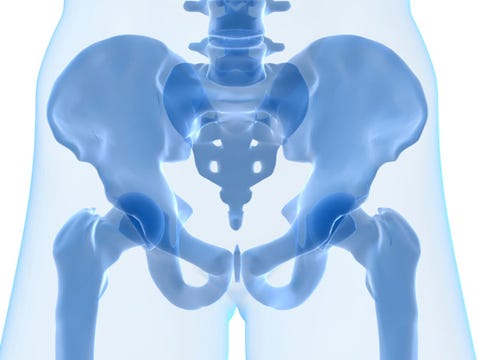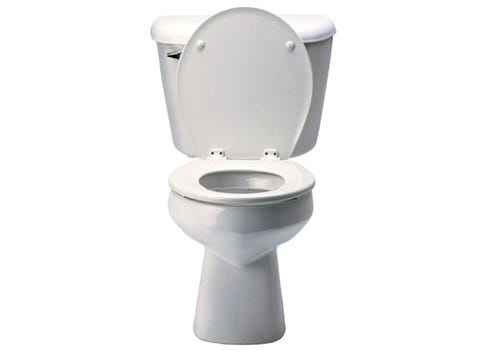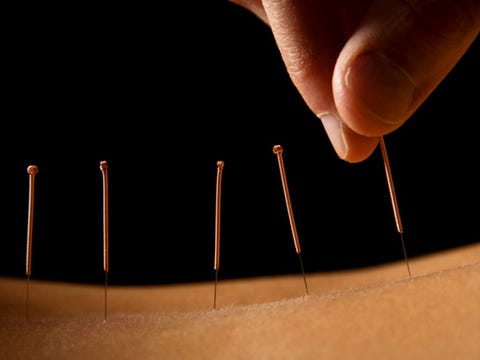My Back Molar Hurts When I Bite Down
The truth about pelvic pain

If you have pelvic pain, getting a proper diagnosis is never as cut-and-dried as learning, say, that you have high blood pressure. But unlike in the past—where women had to swear off sex and tight jeans to avoid pain—today more doctors are equipped to help you figure out what's wrong so you can get relief. What doctors now know: Chronic pelvic pain is rarely due to just one problem. "Most women have three or more conditions, each of which adds to their overall discomfort," says Richard Marvel, MD, director of the Center for Pelvic Pain at the Greater Baltimore Medical Center and an assistant professor of gynecology and obstetrics at Johns Hopkins University School of Medicine. "If you treat just one cause, the patient won't get much better." (Looking to beat pain for good? Prevention has smart answers—get a FREE trial + 12 FREE gifts.)
Even so, you still need to be your own educator and advocate. Here's how to identify symptoms for the most common pelvic pain problems (such as endometriosis, interstitial cystitis, and vulvodynia), and learn how they're diagnosed, and most importantly, treated.
1. Endometriosis

Is it common? 5 million women have it.
What is endometriosis? Cells similar to the tissue lining the uterus migrate elsewhere and break down each month in sync with your period.
Telltale symptoms: Severe cramps, often coinciding with your menstrual cycle, that radiate to the lower back and leg.
How it's diagnosed: Laparoscopy (a minimally invasive surgical procedure) to perform biopsies (removal of tissue samples for examination under a microscope).
Top treatments: Frontline remedies for endometriosis include NSAID drugs, such as ibuprofen and naproxen sodium, along with birth control pills and other hormones to shrink endometrial tissue. Your doctor may recommend minimally invasive surgery to remove or destroy endometrial growths or, in severe cases, a hysterectomy might be necessary.
2. Interstitial Cystitis

Is it common? New research shows that 3 million women have it.
What is interstitial cystitis? It involves recurring discomfort in the bladder, which may be caused by a breakdown of mucin, cells on the surface of the bladder that protect it from acidity.
Telltale symptoms: Women say interstitial cystitis (IC) is like the worst urinary tract infection they ever had, with burning or stabbing pains when their bladders are full and when they urinate, which some do—yikes!—as often as 60 times a day and night.
How it's diagnosed: By ruling out other conditions that could cause the same symptoms. Your doctor will test your urine for bacteria to eliminate a urinary tract infection and use a thin, lighted instrument called a cystoscope to examine your bladder; a bladder wall biopsy may be needed to cross off cancer as a possibility.
Top treatments: Elmiron, the first oral drug developed for IC, coats the bladder surface and may take 6 to 9 months to be totally effective. Doctors have also had some success with antihistamines, a variety of tricyclic antidepressants (used for their antipain properties), antiseizure medications (increasingly prescribed for hard-to-treat pain), and other medications instilled directly into the bladder.
3. Pelvic Floor Tension Myalgia

Is it common? Yes, but frequency is unknown.
What is pelvic floor tension myalgia? Many issues, both physical (such as difficult childbirth) and emotional, can lead to chronic tension in the pelvic floor muscles, which support your pelvic organs.
Telltale symptoms: A heaviness or achiness in the pelvis; burning, itching, and pain in the vagina or urethra (the tube that drains urine from the bladder).
How it's diagnosed: Physical examination by an experienced pelvic pain practitioner.
Top treatments: The most effective treatments involve pelvic floor physical therapy. Think of it as a vagina workout: You'll learn how to align your pelvis and do a core strengthening and stretching routine that helps prevent pelvic floor muscles from going into spasm. Botox injections may prevent spasms by temporarily relaxing the muscles. Trigger point injections of the anesthetic lidocaine relieve pain for some women.
Strengthen your pelvic floor with Pilates:
4. Pelvic Congestion Syndrome

Is it common? 7 million women have it.
What is pelvic congestion syndrome? Varicose veins in the pelvis cause pain. Like varicose veins in the leg, the valves in veins become weak and don't close properly, so blood pools, causing painful pressure.
Telltale symptoms: A dull, aching, throbbing pain in the pelvis, often described as a "heavy" feeling. The pain is absent or mild in the morning and gets progressively worse throughout the day. It improves when you lie down or apply heat.
How it's diagnosed: A special test called a transcervical venogram enables your physician to measure the size of the abnormal vein and its rate of blood flow.
Top treatments: Doctors often first try a progestin hormone, which has been shown in studies to decrease pain and shrink the veins. If drugs fail to provide relief, embolization, a procedure that closes off problem veins, helps as many as 70% of women. If you don't plan to become pregnant, a hysterectomy, in which the tubes and ovaries are removed along with the affected vein, has been shown to be the most effective therapy.
5. Vulvodynia

Is it common? 6 million women have it.
What is vulvodynia? Remember the episode of Sex and the City when Charlotte's vagina was depressed? Yep, vulvodynia—which means chronic vulvar pain—was to blame. Although the causes of vulvodynia are unknown, experts speculate that previous yeast infections may make some women more susceptible to developing vulvodynia. Another possible cause: nerve damage caused by anything from horseback riding to childbirth. About 75% of women with vulvodynia suffer from vulvar vestibulitis—pain at the entry to the vagina.
Telltale symptoms: A persistent or intermittent burning or stinging in the vulva that may spread to your butt and upper thighs. Inserting a tampon, sitting, or even wearing your favorite jeans can bring it on. About 80% of women with the disorder have pain during sex.
How it's diagnosed: The "cotton swab" test, in which doctors touch parts of the vulva to detect pain, helps identify vestibulitis. There is no test for vulvodynia; docs rely on an extensive exam, your health history, and tests to exclude other causes.
Top treatments: First remedies for vulvodynia include antiseizure drugs, antidepressants, and the topical anesthetic lidocaine. Some specialists have had success by compounding all of these drugs into a topical formula that's applied directly to affected tissues, says Christin Veasley, associate executive director for the National Vulvodynia Association. Surgery to remove nerve endings at the entrance to the vagina (the vestibule) helps up to 90% of women with vulvar vestibulitis, but it's a last resort.
Natural remedies for pelvic pain

In addition to medications, procedures, and surgeries, some of these natural options also help women deal with the pain.
For pelvic floor tension myalgia: Biofeedback-guided Kegel exercises
Nearly 75% of patients who've tried these have found relief, says clinician Howard Glazer, PhD, of New York-Presbyterian Hospital. (Are you doing your Kegels right? Check out 3 Questions and Answers About Kegels.)
For endometriosis: Clean eating
Try an organic diet with no red meat or dairy containing hormones.
For vulvodynia: Acupuncture
This Chinese treatment has been shown to help both vulvodynia and endometriosis.
For interstitial cystitis: Low-acid diet
Try following a plan that excludes bladder-irritating foods such as coffee, tea, citrus fruit, hot peppers, and chocolate.
More from Prevention: 20 Mind-Body Treatments That Actually Work
Find the right doctor

Because chronic pelvic pain (CPP) involves several body systems, including the bladder, colon, and uterus and all their respective nerves and muscles, only a pelvic pain specialist possesses the broad knowledge and experience required to provide you with an accurate diagnosis and appropriate treatment. Although some gynecologists have developed practices focusing exclusively on the syndrome, most CPP specialists can be found at pelvic pain clinics, which are usually affiliated with hospitals.
There, you will likely find your "specialist" to be a team that includes a gynecologist, urologist, physical therapist, psychologist, and specially trained nurse-practitioner. Experience has taught them that CPP almost always has more than one cause; if they find that you have endometriosis and a musculosketal problem, for instance, all can be treated at the clinic. To find a center in your area, ask your family doctor or gynecologist or consult teaching hospitals in your area.
This content is created and maintained by a third party, and imported onto this page to help users provide their email addresses. You may be able to find more information about this and similar content at piano.io
My Back Molar Hurts When I Bite Down
Source: https://www.prevention.com/health/a20462351/5-reasons-for-vaginal-and-pelvic-pain/
0 Response to "My Back Molar Hurts When I Bite Down"
Post a Comment